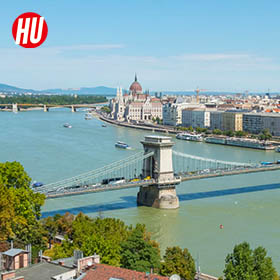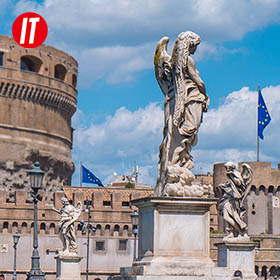
Rome, the capital of Italy, has a history of nearly 3,000 years and is one of the world’s most popular tourist destinations, with the famous Colosseum, Pantheon and Castel Sant’Angelo. Rome is also the center of Catholicism, with four Major Basilicas of the Catholic Church located in both Rome and the Vatican.
The Legacy of the Ancient Roman Empire
The Roman Empire stretched across half of the European continent and extended to the Mediterranean coastlines of Turkey and Egypt. As the political and economic hub of the Roman Empire, Rome was the largest city in the world at the time, and as the saying goes, “all roads lead to Rome”. Today, Rome has preserved many buildings and monuments from the 1st century AD, such as the Colosseum, the Pantheon, the Roman Forum and the Castel Sant’Angelo, which are the best witnesses to the golden age of Rome.

Colosseum
Battlefield of Gladiators 2,000 Years Ago
The Colosseum, symbol of Rome, was built in 72 A.D. With tens of thousands of seats, corridors and winch doors, the Colosseum was once an arena for gladiators and beasts, and was listed in the New Seven Wonders of the World.

Roman Forum And Palatine Hill
Ruins of the Roman Empire
The Palatine Hill is one of the seven hills of Rome, 40 meters above sea level. The ancient Roman Forum at the foot of the hill was once the political, power, and religious center of the Roman Empire, preserving the remains of the Arch of Titus, the Arch of Septimius Severus, the Senate House, temples, and shrines.

Pantheon
2,000 Year Old Architectural Marvel
The Pantheon in Rome was built in 125 A.D. The world's largest unreinforced concrete dome, with a 43.3-meter diameter, allowing skylight to enter through its oculus, is an architectural marvel in human history. The Pantheon rotunda houses the tombs of Raphael and several Italian kings.

Castel Sant'Angelo
The Pope's Fortress and Refuge
The Castel Sant'Angelo is a mausoleum built by the Roman Emperor Hadrian for himself, which served as a barracks, a prison, and a refuge for the Pope. The castle has a papal residence, Hadrian's crypt and several rooms with frescoes. Its rooftop observation deck overlooks the city of Rome.
Piazzas and Fountains of Rome
Rome inherited the characteristics of European cities known for their squares. Every few steps, you can see one, and most of them are decorated with fountains designed by famous artists, such as the well-known Trevi Fountain, the Fontana della Barcaccia in the Spanish Square (Piazza di Spagna), and the Fountain of the Four Rivers in the Piazza Navona.

Trevi Fountain
World-famous Wishing Fountain
Built in 1762, the Trevi Fountain is one of the most popular attractions in Rome and is also known as a wishing fountain. This baroque fountain is located on the south side of the Palazzo Poli and is carved with images of Neptune and messengers. Legend has it that by putting in a wishing coin, you will be able to return to Rome again.

Piazza di Spagna And Spanish Steps
Memories of Hepburn and Ice Cream
Named after the nearby Palazzo di Spagna, seat of the Embassy of Spain to the Holy See, Piazza di Spagna is a triangular-shaped square with the Spanish Steps on the east side. Facing Via Condotti, the Spanish Steps were featured in the movie "Roman Holiday" and offer a panoramic view of Rome from the top of the hill.

Piazza Navona
Art of Fountains and Sculptures
Piazza Navona, built on the site of the Stadium of Domitian, was transformed into a market square in the 15th century, with several restaurants and cafes nearby. Inside the square are the Fountain of Neptune, the Moor Fountain, and a representative of Baroque art, the Fountain of the Four Rivers by Bernini.

Piazza Venezia
Central Urban Hub of Rome
Piazza Venezia is located in the heart of Rome, where many of the city's main arteries converge, making it a true hub of the city. Piazza Venezia is surrounded by numerous museums, churches, and monuments, the most notable of which is the Vittoriano, located on the south side of the square.

Piazza del Popolo
First Impression of Rome
The Piazza del Popolo is located within the northern gate of Rome. It has a 36-meter high obelisk and three main roads that start from the square and go south, near which three churches of the Holy Virgin are built.

Piazza del Campidoglio
Designed by Michelangelo
Piazza del Campidoglio is a famous city square in Rome, located at the top of Capitoline Hill, and designed and built by Michelangelo. The Piazza della Capitoline is surrounded by three buildings: the Palazzo Senatorio, the Palazzo dei Conservatori, and the Palazzo Nuovo, in the center of which stands the statue of Emperor Marcus Aurelius on horseback.
The Center of Catholicism
Churches, monasteries, and religious schools of all sizes can be found throughout the streets of Rome, and three of the Major Basilicas of the Catholic Church are located in downtown Rome (the other one is in the Vatican). The Basilica of St. John in Lateran is considered the mother church of all Catholic churches worldwide and is the location of cathedra of the Pope. The Basilica di Santa Maria Maggiore is full of historic religious architecture and art, such as mosaics of the 5th century. A set of steps is also kept in Rome, on which Jesus stepped during his trial in Jerusalem, known as the Holy Stairs (Scala Sancta).

Basilica Of St. John Lateran
The Pope's Archbasilica
The Archbasilica of Saint John Lateran is the seat of the Pope, the first of the four papal major basilicas and considered the mother church of all Roman Catholic churches. Before 1308 AD, the papal residence was located next to the basilica, and the church contains the papal seat, the high altar, and the baldachin.

Basilica di Santa Maria Maggiore
The First Church for Virgin Mary
The Basilica di Santa Maria Maggiore, built in the 5th century, is a mixture of architectural and decorative styles from different eras. The Basilica is named after the Virgin Mary, preserving 5th-century mosaics and featuring the Sistine Chapel and the Borghese Chapel.

Basilica Of St. Paul Outside The Walls
Tomb of Saint Paul
The Basilica of Saint Paul Outside the Walls was built in the 4th century on the site where the bones of the Catholic saint St. Paul are buried, and is one of the four Major Basilicas in the Catholic Church. It was rebuilt after a fire in 1823 and is decorated with beautiful mosaics inside and out.

Holy Stairs And Sancta Sanctorum
The Steps Jesus Took to His Trial
The Holy Stairs refers to the 28 marble steps that Jesus walked during his trial and were carried from Jerusalem to Rome in the 4th century for preservation. The Church of Sancta Sanctorum, located at the top of the Holy Stairs, was once the Pope's private chapel and contains numerous religious relics and icons.
In addition to their ranks, churches in Rome are also stages for Italian masters. In the Santa Maria del Popolo, there is a chapel designed by Raphael and famous paintings by Caravaggio and Pinturicchio. In the Santa Maria della Vittoria, “Ecstasy of Saint Teresa” is the lifetime masterpiece of sculptor Gian Lorenzo Bernini.

Santa Maria del Popolo
Works of Great Art Masters
The Santa Maria del Popolo in Rome, built on the north side of the Piazza del Popolo in Rome, boasts an amazing art collection. The Chigi Chapel of the Church was designed by Raphael and is decorated with two sculptures of Bernini. Famous paintings by Caravaggio, Pinturicchio, and others can also be seen in the church.

Santa Maria della Vittoria
The Ecstasy of Saint Teresa by Bernini
Santa Maria della Vittoria in Rome, also known as the Church of Saint Mary of Victory, was built in the early 17th century. The interior of the Baroque-style church preserves the masterpiece "The Ecstasy of St. Teresa" by the master sculptor Bernini, which vividly portrays the painful yet excited look of Saint Teresa of Avila.
The Holy See – Vatican
No visitor in Rome would miss the Vatican. The Vatican is surrounded by the city streets of Rome, and is home to the famous St. Peter’s Basilica and St. Peter’s Square. The Vatican Museums are the fourth most visited museums in the world, which house treasures collected over the centuries by the Catholic Church and the popes.

St. Peter's Basilica And St. Peter's Square
The Greatest of All Churches of Christendom
Situated in the heart of the Vatican, St. Peter's Basilica is the largest church in the world, with a dome nearly 140 meters high and overlooking the Vatican City and Rome. St. Peter's Square in front of the Basilica, designed by Bernini, has an Egyptian obelisk and two semi-circular colonnades leading to the entrance of the church.

Vatican Museums
The Pope's Treasure House
With collections from the Roman Catholic Church and successive popes, the Vatican Museums are the fourth most visited museums in the world. It consists of galleries such as the Gregorian Egyptian Museum and the Pio Clementino Museum. The Sistine Chapel and the Raphael's Rooms of the Apostolic Palace are also open to visitors.
Attractions in Rome
- Colosseum
- Pantheon
- Trevi Fountain
- Castel Sant'Angelo
- Ponte Sant'Angelo
- Roman Forum And Palatine Hill
- Piazza di Spagna And Spanish Steps
- Piazza Navona
- Piazza del Popolo
- Santa Maria del Popolo
- Piazza Venezia
- Vittoriano / Victor Emmanuel II Monument
- Piazza del Campidoglio
- Santa Maria della Vittoria
- Basilica di Santa Maria Maggiore
- Basilica Of St. Paul Outside The Walls
- Basilica Of St. John Lateran
- Holy Stairs And Sancta Sanctorum
- Sant'Andrea della Valle
- Church Of The Gesu



































